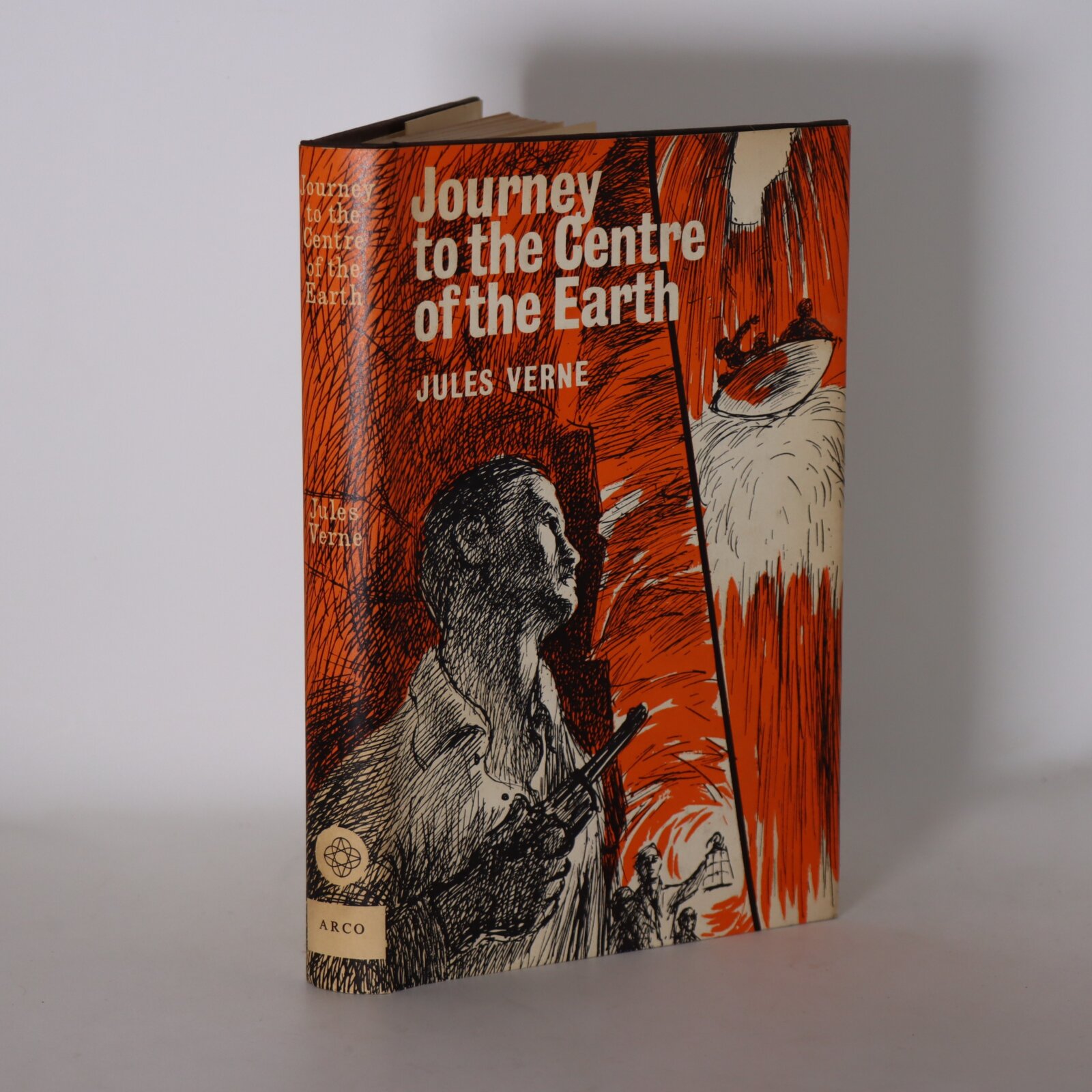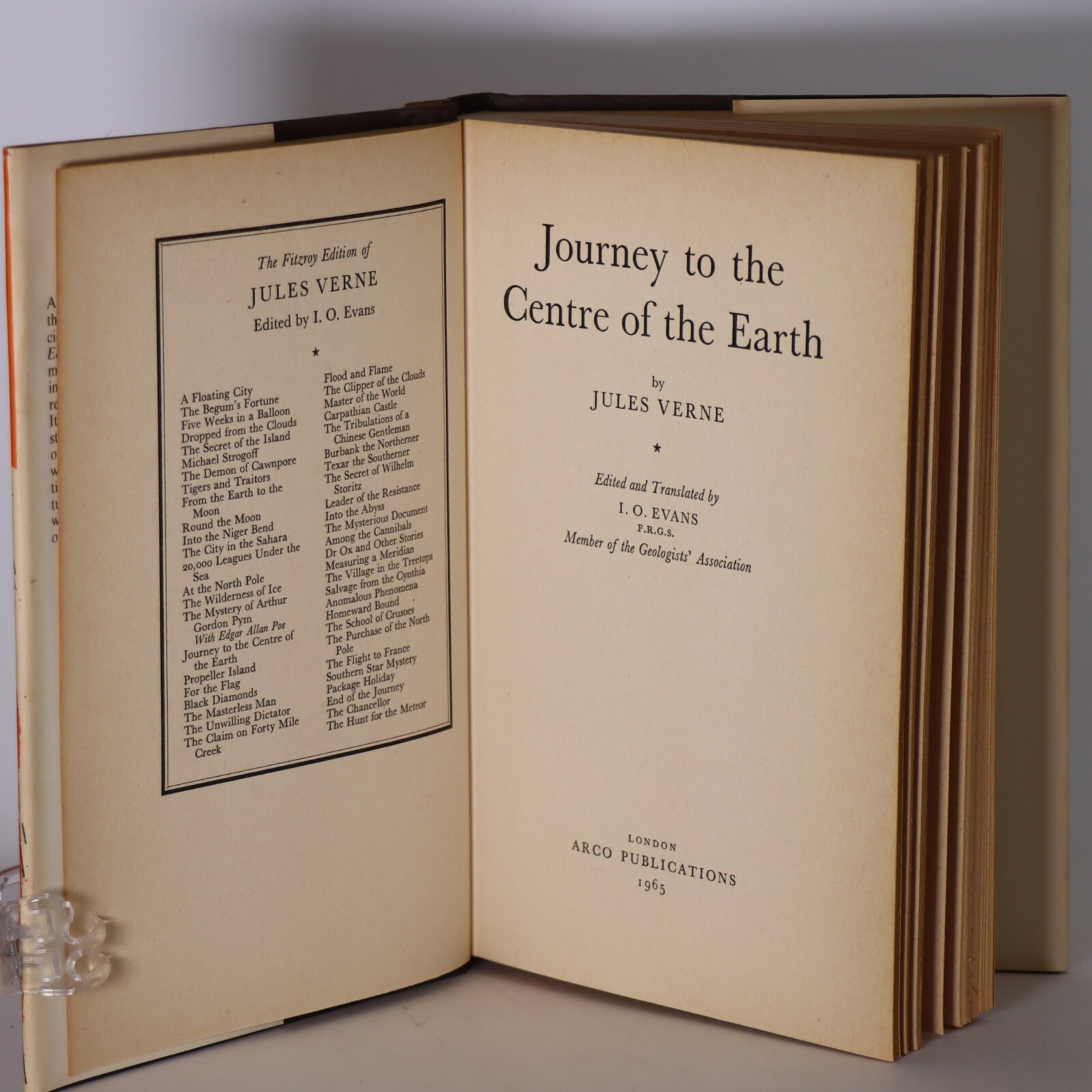Journey to the Centre of the Earth.
By Jules Verne.
Printed: 1965
Publisher: Arco Publications. London
Edition: Second impression
| Dimensions | 14 × 21 × 2.5 cm |
|---|---|
| Language |
Language: English
Size (cminches): 14 x 21 x 2.5
Condition: Fine (See explanation of ratings)
Item information
Description
In the original dustsheet. Brown cloth binding with gilt title on the spine.
F.B.A. provides an in-depth photographic presentation of this item to stimulate your feel and touch. More traditional book descriptions are immediately available.
A very nice clean book
Journey to the Center of the Earth (French: Voyage au centre de la Terre), also translated with the variant titles A Journey to the Centre of the Earth and A Journey into the Interior of the Earth, is a classic science fiction novel by Jules Verne. It was first published in French in 1864, then reissued in 1867 in a revised and expanded edition. Professor Otto Lidenbrock is the tale’s central figure, an eccentric German scientist who believes there are volcanic tubes that reach to the very center of the earth. He, his nephew Axel, and their Icelandic guide Hans Rappel into Iceland’s celebrated inactive volcano Snæfellsjökull, then contend with many dangers, including cave-ins, subpolar tornadoes, an underground ocean, and living prehistoric creatures from the Mesozoic and Cenozoic eras (the 1867 revised edition inserted additional prehistoric material in Chaps. 37–39). Eventually the three explorers are spewed back to the surface by an active volcano, Stromboli, located in southern Italy.
The category of subterranean fiction existed well before Verne. However his novel’s distinction lay in its well-researched Victorian science and its inventive contribution to the science-fiction subgenre of time travel—Verne’s innovation was the concept of a prehistoric realm still existing in the present-day world. Journey inspired many later authors, including Sir Arthur Conan Doyle in his novel The Lost World and Edgar Rice Burroughs in his Pellucidar series.
Jules Gabriel Verne; 8 February 1828 – 24 March 1905 was a French novelist, poet, and playwright. His collaboration with the publisher Pierre-Jules Hetzel led to the creation of the Voyages extraordinaires, a series of bestselling adventure novels including Journey to the Centre of the Earth (1864), Twenty Thousand Leagues Under the Seas (1870), and Around the World in Eighty Days (1872). His novels, always well documented, are generally set in the second half of the 19th century, considering the technological advances of the time.
In addition to his novels, he wrote numerous plays, short stories, autobiographical accounts, poetry, songs and scientific, artistic and literary studies. His work has been adapted for film and television since the beginning of cinema, as well as for comic books, theatre, opera, music and video games.
Verne is considered to be an important author in France and most of Europe, where he has had a wide influence on the literary avant-garde and on surrealism. His reputation was markedly different in the Anglosphere where he had often been labelled a writer of genre fiction or children’s books, largely because of the highly abridged and altered translations in which his novels have often been printed. Since the 1980s, his literary reputation has improved.
Jules Verne has been the second most-translated author in the world since 1979, ranking between Agatha Christie and William Shakespeare. He has sometimes been called the “father of science fiction”, a title that has also been given to H. G. Wells and Hugo Gernsback. In the 2010s, he was the most translated French author in the world. In France, 2005 was declared “Jules Verne Year” on the centenary of the writer’s death.
Want to know more about this item?

Related products
Share this Page with a friend











